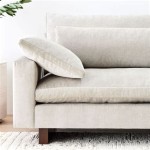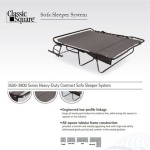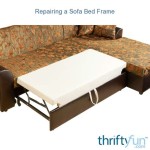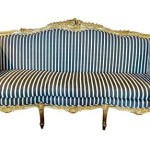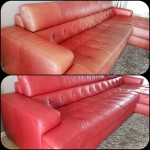How To Make DIY Sofa Cushions
Creating custom sofa cushions allows for personalized comfort and aesthetic enhancement of any living space. This comprehensive guide outlines the process of crafting DIY sofa cushions, encompassing material selection, measurement, cutting, sewing, and stuffing techniques.
Material Selection: Selecting appropriate materials is crucial for cushion durability and comfort. Fabric choices range from durable canvas and upholstery-grade fabrics to softer options like linen or velvet. Consider factors such as color, texture, and the intended use of the sofa when selecting the fabric. Foam, polyester fiberfill, or down feathers are common filling materials, each offering distinct levels of firmness and support.
Measurements and Pattern Making: Accurate measurements are essential for well-fitting cushions. Carefully measure the existing sofa cushions or the seating area where the new cushions will be placed. Record the length, width, and desired thickness. These measurements will serve as the basis for creating a pattern. Add a seam allowance, typically one inch, to each measurement to account for the fabric that will be sewn together.
Cutting the Fabric: Using the measurements and pattern as guides, carefully cut the fabric. A sharp rotary cutter and a cutting mat are recommended for clean, straight cuts and to prevent fabric fraying. Ensure the fabric is laid flat and smooth before cutting to avoid distortions. Cut two identical pieces of fabric for each cushion, one for the top and one for the bottom.
Sewing the Cushion Cover: Pin the two fabric pieces together, right sides facing inward. Ensure the edges are aligned precisely. Sew along the perimeter of the pinned fabric, leaving a small opening on one side for stuffing. A straight stitch is typically sufficient for most upholstery fabrics. Reinforce the corners by backstitching to ensure durability. After sewing, trim any excess fabric and clip the corners diagonally to reduce bulk and create sharper corners when the cushion is turned right-side out.
Stuffing the Cushion: Carefully turn the cushion cover right-side out through the opening left for stuffing. Insert the chosen filling material. For even distribution, fluff and adjust the filling material as it is being inserted. The desired firmness dictates the amount of filling. A firmer cushion requires more filling, while a softer cushion requires less.
Closing the Opening: Once the cushion is adequately stuffed, close the opening using a hand-sewing technique, such as a ladder stitch or slip stitch. These stitches create an invisible seam and provide a neat finish. Ensure the stitches are tight and secure to prevent the filling from escaping.
Creating Zippered Cushion Covers: For removable and washable covers, incorporate a zipper into the design. Measure and cut the zipper to fit the opening designated on the cushion cover. A zipper foot attachment on the sewing machine facilitates attaching the zipper to the fabric. Sew the zipper to the opening, ensuring the zipper teeth are aligned with the fabric edges. Once the zipper is attached, proceed with the sewing and stuffing steps as outlined above.
Adding Decorative Elements: Enhance the aesthetic appeal of the cushions by adding decorative elements such as piping, buttons, or tufting. Piping adds a sophisticated touch and outlines the cushion shape. Buttons can be sewn on strategically to create tufting, which adds depth and texture. These embellishments can be customized to complement the overall décor of the room.
Cushion Care and Maintenance: Regular maintenance ensures the longevity of the cushions. Vacuuming the cushions regularly removes dust and debris. Spot cleaning is recommended for minor stains. For removable covers, follow the care instructions on the fabric label. Regular fluffing and rotation of the cushions maintain their shape and prevent uneven wear.
Variety in Cushion Shapes and Sizes: Explore different shapes and sizes beyond standard square or rectangular cushions. Bolster cushions provide back support and add a decorative element. Round or wedge-shaped cushions offer unique design possibilities. Consider the overall style and function of the sofa when choosing cushion shapes and sizes.
Working with Different Fabric Types: Understanding the characteristics of different fabric types is crucial for successful cushion construction. Linen and cotton are breathable and comfortable but may require more frequent cleaning. Velvet and chenille offer a luxurious feel but might be more susceptible to wear and tear. Outdoor fabrics are durable and weather-resistant, suitable for patio furniture cushions.
Choosing the Right Filling Material: Selecting the appropriate filling material impacts the cushion's comfort and durability. Foam provides firm support and maintains its shape well. Polyester fiberfill offers a softer, more pliable feel. Down feathers provide a luxurious, plush feel but require more maintenance. Consider individual preferences and the intended use of the cushions when choosing the filling material.

Diy Outdoor Cushions A Erfly House

Easy Diy Couch Cushion Covers Tie Dyed 5 Steps With Pictures Instructables

Diy Couch How To Build And Upholster Your Own Sofa

Learn How To Create Your Own Diy Modern Wood Couch With Leather Cushions

Diy Outdoor Cushions A Erfly House

How To Build A Diy Outdoor Sofa With Cushions Thediyplan

Easy Diy Drawstring Seat Cushion Cover Upholstery Fabric Blog

How To Make Your Own Interior Sprung Cushion Part 2 Of

50 Easy Ways To Build A Diy Couch Without Breaking The Bank

Diy Couch Makeovers 10 Creative Solutions For A Tired Sofa Bob Vila

